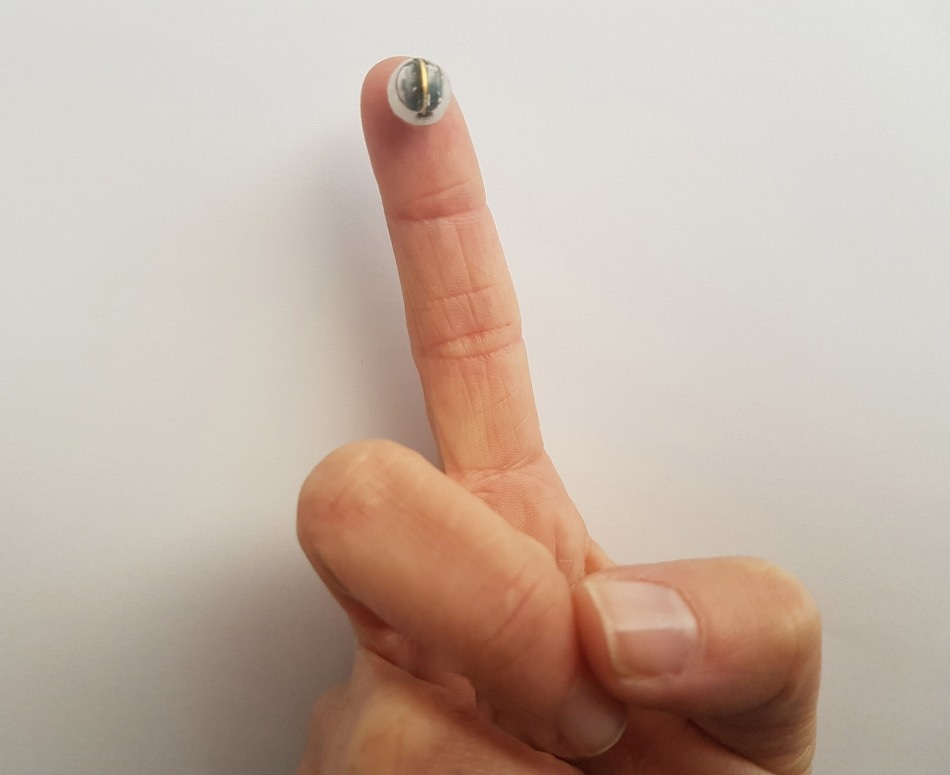Dec 4 2017
Bio-reactors are said to be the cooking pots of bio-technologists and biochemists, in which pharmaceutical agents, nematodes or enzymes are made for the purpose of biological pest control. A nutrient solution (such as oxygen, heat, acid or alkali) is used to control the pH value and the preferred product is formed.
The more ideal the conditions are, the better the yield will be. Fraunhofer scientists have currently created spherical probes to more effectively monitor and simplify the manufacturing process.
 With the miniaturized radio transmission inside the sphere, the measured data is transmitted live to a base station. (© Photo Fraunhofer ENAS)
With the miniaturized radio transmission inside the sphere, the measured data is transmitted live to a base station. (© Photo Fraunhofer ENAS)
The right temperature establishes how well microorganisms or cells can be cultivated in a bioreactor. Although heat in the reactor is spread differently, temperature has thus far only been able to be measured selectively using rod probes that are inserted through predefined holes. "With our mobile sensor spheres, which are about the size of a pea, we can capture the temperature in many places at the same time. This makes it possible to accurately regulate the heat input so that it is optimal for the production process," says Tobias Lüke, who has developed the new Sens-o-Spheres measuring spheres at the Fraunhofer Institute for Electronic Nano Systems ENAS in partnership with researchers from the Technical University Dresden and project partners from industry.
At one liter, the temperature differences within a reactor are not that great. However, with several thousand liters, the degree of error increases considerably. With our precise measurement technology, there are fewer problems in upscaling the volumes, which means switching from small test reactors in the laboratory to large ones in the production hall.
Tobias Lüke, Fraunhofer Institute for Electronic Nano Systems ENAS
No limitations
Another benefit of the Sens-o-Spheres: While rod probes are tied together by cables, the spheres are fitted with a rechargeable battery. "The amount of installation effort is therefore quite low," stated Lüke. The Sens-o-Spheres merely float in the medium, so they do not cause any disturbance, such as when stirring. Furthermore, they can be easily used in kilometer-long tube reactors and other unique reactor types as well as in classic small cultivation vessels, such as the shake flask.
Common measuring systems have their limits in this regard.
Tobias Lüke
The recorded data is conveyed live via radio to a base station. Each measurement is assigned to a particular sphere, as each has its own ID. When there are more spheres, the accuracy of the measurement will be better. There is no rule of thumb regarding how many spheres are needed, though. The approach is to use as many spheres as required, and as few as possible.
Easy to reuse
The spheres, after use, can be sterilized in the autoclave, as the electronics are sturdy and also securely enclosed by a capsule composed of polypropylene – neither high temperatures of about 120 °C or more (as is usual in autoclaving) nor moisture can harm it. The spheres can thus be preserved sterile, recharged by means of a particularly designed inductive battery charging system, and reused.
Soon, the measuring spheres can be able to detect not just the temperature, but also the pH value and the oxygen content. "We also want to connect the base station to the overall system. Then, the manufacturing process could be automatically controlled based on the measured values. The spheres should also be able to be located so that it is known exactly where the measured value was recorded."
The measuring spheres are not only suitable for microbiological culture and process development in the laboratory, but could also be used in environmental measurement, drug production or screening in the field of medicine.